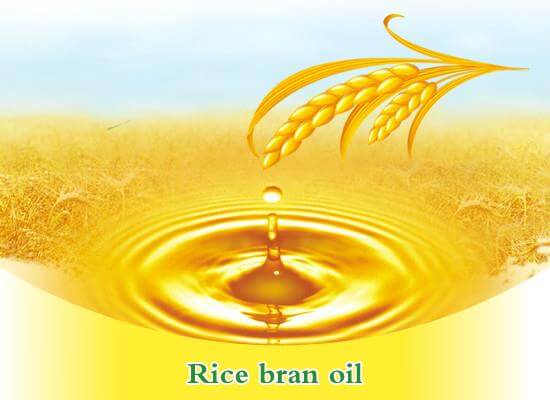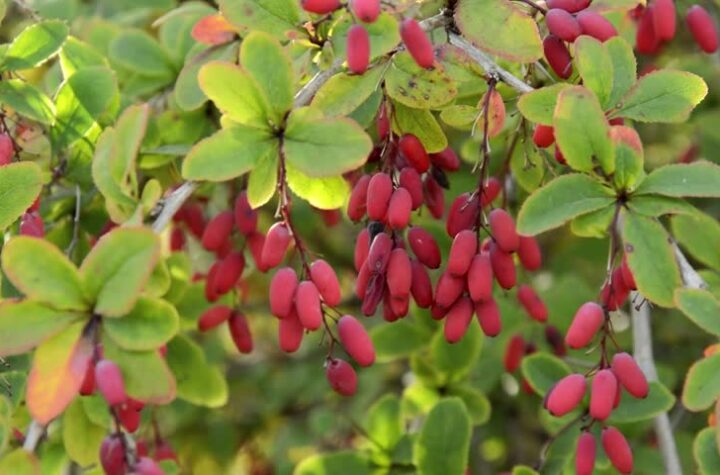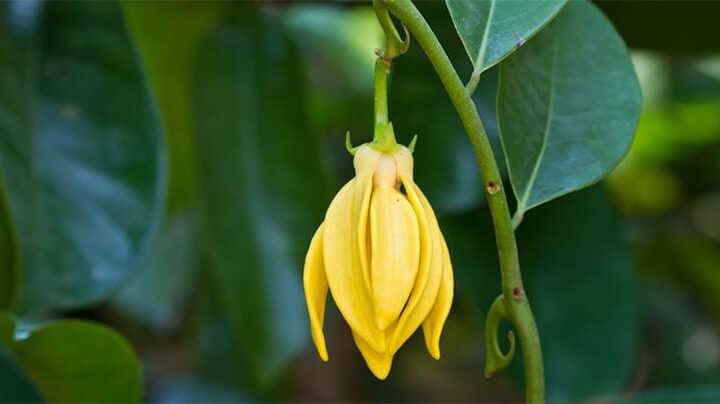
Achillea Millefolium also called as yarrow is a flowering plant. Its use has so much history it’s first named only after the Greek Trojan war hero Achillea used it to treat the wounds of its injured soldier during the war. He had also used to heal wounds of a soldier in his other battles. It is among the hardiest of perennials (a plant that lives for over two years). It can grow from 2 to 4 feet in height. Achillea is resistant to insects and diseases while attracting useful insects. For traditional uses, because of its distribution, it has different applications in different countries. A lot of cultures consider yarrow has special magical powers.
We dehydrate its flowers and leaves for the teas, tinctures, and soaps. It has many health benefits if used both internally and externally. Its flower stems and leaves have high medicinal value when the plant is blooming. Yarrow was originated from Europe and Asia; it spread to North America and other parts of the word during colonization. It originates in Asia and Europe, where it is used in various Ayurvedic, homeopathy and electropathy medicine. In some countries, it becomes prevalent in the home garden. It has pink, red, and white flowers.
It has antibiotic and anti-bacterial properties that can kill many types of bacteria found on the skin and destroy the pain causing infections. Yarrow is also useful in yeast and microbial infections. Its oil, if we mix within shampoos, has significant health benefits. In the manufacturing industry, we can also use it as a cosmetic cleanser and in snuff.
Other common names of the plant:
Table of Contents
Table of Contents
- Other common names of the plant:
- History of yarrow:
- Cultivation of Achillea Millefolium or Yarrow
- Health benefits of yarrow:
- Helpful in Asthma and High Blood Pressure
- Other benefits of yarrow:
- Uses of yarrow:
- Precaution while using Yarrow:
| Common Yarrow | Devil’s nettle | Gordaldo |
| Milfoil | Nosebleed plant | Older man’s pepper |
| Older man’s mustard | Sanguinary | Soldier’s Woundwort |
| Thousand-leaf | Thousand-seal | Achillea filipendulina |
| Carpenter herb | Noble yarrow plant | Militaris Herb |
History of yarrow:
Achillea millefolium, known as Yarrow, is a herb that has traditionally been used in medicine for its ability to stop bleeding and its anti-inflammatory properties.
The botanical name, Achillea millefolium, is used to honor the great mythological Greek warrior Achilles. It is believed that he used this herb to heal his wounded soldiers in the battlefield and stop their bleeding in around 1200 BC and the use of Yarrow was taught to him by the centaur, Chiron who was a master of healing. A legend also goes that this knowledge of the use of Yarrow helped Achilles during the siege of Troy and the other battles. This is not the only instance in the history of Yarrow being used to stop bleeding in a mythological story.
In French, Yarrow is more known as “herd de St. Joseph”. The story goes that once when Joseph cut himself during some woodwork, baby Jesus brought him some Yarrow herb. He used it to stop bleeding.
Yarrow also finds a reference as associated with Greek and other European gods and Goddesses of love and sexuality like Aphrodite and the European Horned God.
People in the past also considered it as magical herbs, as it was used in practice to “drive out the devil” from the body of a person who has possessed. But to make it useful, someone recited hymns over it seven times before its use, which makes it perfect to use for driving out the devil.
Other than references in Greek and other European mythologies, Yarrow was also familiar with the early humans. We also see it in the Neanderthal’s burial ground.
Other historical references:
Native to parts of Europe and Asia, Yarrow was naturalized in North America and extensively used by Native Americans for their medicinal properties.
With so many benefits, Yarrow has found many uses in the medicinal field and also agriculture. This was the reason it was also called “life medicine” by a Native American tribe.
Out of all the legends of Yarrow, one stands out as the most interesting. In Ireland, young girls would cut a square sod in which they grew a yarrow plant and placed it under their pillow. It was believed that this would lead them to dream of their loved one. This may have been because of its association with the Greek God and Goddess of love.
In Asian culture, the first reference of Yarrow can be seen in China for divination and medicine. Yarrow stalks were used in the ancient oracle of the I Ching. The philosophy of Yin and Yang, the universe in perfect balance, is thought to be represented in this. It is also seen as a lucky charm along with a tortoiseshell. Yarrow was used for its medicinal properties and effects on the liver, kidneys, and other parts of the body. In Asia, Yarrow was revered for its benefits in agriculture too. “Wherever Yarrow grows, one need not fear wild beasts or poisonous plants” is an ancient Asian saying which refers to Yarrow’s ability to repel harmful insects from the surrounding.
Yarrow was associated with magical powers in European countries too. In British folklore, you get to know that Yarrow leaf was held against one’s eye. This was supposed to give the person the power of clairvoyance or seeing the events were to happen.
Cultivation of Achillea Millefolium or Yarrow
Achillea Millefolium is a lot grown in the temperate region of the world. It grows sixty to seventy centimeters in height. For its cultivation, full sunlight and a good drainage system are required. It blooms in the middle of June. You can grow it in gardens and natural landscapes with either adverse conditions of the hot or cold region.
We can also grow yarrow in less ideal conditions with some artificial methods. For its growth, every single plant needs space because it spreads in many areas. Its leaves and flowers are useful in a salad.
Health benefits of yarrow:
Heal skin wounds and stop bleeding:
Because of its natural property to cure the injury, cuts, and bruises, we sometimes know it to be a healing herb. The chemical found in it named as achilleine prevents bleeding from the wounds and cuts. It has natural antiseptic properties that safeguard wounds from various infections. Some cosmetic product manufacturing companies use it as an ingredient in many skin care products.Some study shows it can cure wound and burn created by napalm. Traditionally, it was known as healing herbs because of its properties to heal the wound at the time of war. It reduces the time of blood clotting, thus helping in the significant injury where blood flow is high.It, along with Abroma Augusta, can lessen menstrual bleeding and improve circulation. Yarrow’s property to stop bleeding is even proved by much research papers study like the US National Library of Medicine, National Institutes of Health study on yarrow. You can use yarrow or Achillea Millefolium along with Abroma Augusta to stop bleeding during periods. Use its ten drops after a gap of every two hours.
Potential Amenorrhea Aid:
Amenorrhea is a situation when a woman who has already established her menstruation suddenly stops having regular periods. That is for young women until the age of menopause. There are many stages of amenorrhea, and many generations when amenorrhea can happen to a woman. Yarrow, which we mainly used to stop bleeding, was also used for the promotion of a period in the woman who does not have regular periods. Yarrow act as an emmenagogue, promotes blood circulation in the uterus, pelvic which encourages menstruation. However, there is no clinical study to confirm these claims, as all the claims are based on its use in traditional times.
Mild sedative for anxiety
We have traditionally used achillea Millefolium as a sleeping herb. As we know that adenosine causes us to sleep and yarrow impacts the central adenosine system which cure insomnia.
The study published in the Journal of Ethnopharmacology confirms its anti-anxiety properties based on a clinical trial made on rats. According to the same survey, yarrow behavior is like diazepam. The researches took yarrow extract for a various subject which results in a reduction in the anxiety and better sleep for short terms if repeated use. In the study, the researcher found that it has both short-term and long-term effects with continuous use and may cure insomnia issue permanently if used for a longer duration.
Treatment for mastitis
Mastitis is a breast infection that affects the breast tissue in the woman who is breastfeeding. The woman is in the first three months after delivery is the most vulnerable to mastitis. This problem also occurs during the breastfeeding period. Suffering from mastitis, a woman’s breastfeeding tissue becomes inflamed and painful. Mastitis occurs when chronic inflammation of the ducts below the nipples occurs. Sometimes, it is excruciating at the time of breastfeeding.
Yarrow can help in easing the symptoms of mastitis that mostly occur among women who are breastfeeding. This is because of its antibacterial and anti-inflammatory properties, which cure mastitis problems in women.
Anti-inflammatory properties
We derive the word inflammation from the Latin word meaning to set on fire. According to medical science, chronic inflammation may be causes of the more significant issues in the body like cancer, asthma, allergies, etc. Traditionally, yarrow was used to treat inflammation, particularly inflammation in the digestive tract, inflammation in the intestines and women’s reproductive tract.
Its anti-inflammatory properties are down to cyanidin and azulene, which has anti-inflammatory properties [1]. Herbs have not only anti-inflammatory properties but also has astringent properties which help in curing many skin related diseases like eczema. For a patient who is suffering from chronic pain, yarrow tea may give him massive relief from pain. Its natural anti-spasmodic properties, along with its ability to improve blood circulation, help ease the pain.
Because of its anti-inflammatory properties, traditional healthcare practitioners recommend using it for Crohn’s disease. But there was no research made on it until date. All the uses are done based on the folk medicine books where it was claimed that yarrow had been useful in the past for Crohn’s disease.
Improves digestion and cure liver problems
Being bitter, aromatic, and its fatty acids encourage the production of bile in the liver. Bile produced by the liver aids the digestion of food in the small intestine. In humans, the liver produces bile (liver bile) continuously and stores and concentrates in the gallbladder. Bile flows out of the gallbladder, known as the cholagogue effect. The free-flowing action improves digestion and prevents gallstones from forming. Because of its affinity to circulation, it can help move congested blood in the portal vein, which aids in liver problems. We can also use it to cure colitis and diverticulitis because of its ability to heal the mucous membrane of the digestive tract. It was also a traditional remedy for bloody diarrhea and dysentery.
It improves the metabolism process within the body by decomposing food and the absorption of nutrients. Therefore, it improves the overall working of the body.
As a Diaphoretic food and cure fever:
Yarrow may be a tremendous diaphoretic which increases perspiration. Yarrow get rid of toxins and extra salt from the body through sweat by increasing sweating. Excess sweat also cools the body down and gives relief from fevers.
You can use it when you have a constant high temperature, and it does not reduce with any allopathic medicine like paracetamol or other. You can take ten drops after a gap of every two hours. Traditionally, people use it as a substitute for quinine to prevent malaria. Yarrow has a property to cure any fever like hay fever, cold and to induce sweating. We can also drink its tea to treat dog bites.
Urinary and reproductive system problems
When we use Achillea Millefolium’s extract as a uterine tonic, its diuretic property makes it an excellent remedy for cystitis and urinary tract infections. And, know to be women herbs. You can use its dilution to benefit the reproductive system and ease menstrual pain. It is also a superb in-between period spotting. It aids in vaginal infection and irregular discharge because of its antibiotic and anti-bacterial properties. You may like to read an article on health & beauty tips.
Helpful in Asthma and High Blood Pressure
Asthma is a disease which happens because of the result of Inflammation and narrowness of the airways. A study published in Phytotherapy Research made on animals shows that yarrow has hypotensive, cardiovascular inhibitory, and bronchodilatory effects. Yarrow affects to reduce hypertension, thus relaxing blood pressure, and ease in the breathing makes it useful for the patient with high blood pressure and asthma problem. Yarrow facilitates oxygen and blood circulation, easing the symptoms of asthma.
Other benefits of yarrow:
- Achillea Millifolium cures bleeding piles or hemorrhoids.
- If pregnant women are suffering from a varicose vein problem, then use ten drops of Achillea Millefolium or yarrow thrice a day can help him get rid of the varicose problem.
- Traditionally, people used it in the flavoring of beer drunk on various occasions. You still use flowers and leaves to prepare multiple alcoholic drinks.
- In Australia and Swaziland, they use it in a livestock feed because of its rich nutrient content.
- use in traditional Chinese medicine for treating sores, relaxing muscles, and curing mental disorders. Chinese medicine credit it for its ability to affect kidney, spleen, and liver.
- We can use it in the uterine tonic when the uterine comes with the stoppage.
- In traditional Russian medicine, They use it to increase the milk of breastfeeding mothers and cures hypertension
- In Germany, They use it to treat a lot of psychological disorders, and We also use it as hypnotics to help with post-surgery recovery.
- For those who suffer from chronic pain because of rheumatoid arthritis, yarrow leaves provide relief. It helps remove uric acid from the joints and helps oxygenate and detoxify the blood.
Uses of yarrow:
Yarrow has a little bitter taste although having sweet in flavor. It is very soft plant sp always cook it at low temperature when using it in any of your recipes as overheating may destroy its character.
- You can use yarrow in soups or other liquid recipes by either drying its leaves or fresh leaves of it just like we use coriander in soups.
- Dry its leaves and uses it in cooking just like coriander, we use in cooking foods.
- You can also make dressing on cooked vegetables or various dals.
- Use its fresh leaves and flowers in salads to add more flavor in the salad.
- You can also prepare its tincture if you have fresh leaves of it surrounding your place. Cut fresh leaves of yarrow and put an equal quantity of alcohol and water in it. And, set it for 6 to 8 weeks as it is.
- You can also make yarrow tea by taking dried yarrow leaves and one glass of warm water and infuse it for 10 minutes.
Yarrow is readily available at your local natural medicines health stores with the name of Achillea Millefolium. It may be available in the form of tablets, capsules, mother tincture, or its liquid extract.
Precaution while using Yarrow:
Although yarrow has many benefits because of its anti-inflammatory, antibiotic, and anti-bacterial properties, you need to be careful about its use in the following conditions:
- According to a study on pregnant women and animals, it may cause miscarriage, so we need to always consult with a doctor before its use. It is also not safe for breastfeeding women.
- There is also some proof from various studies that yarrow might slow the process of blood clotting during or after the surgery. Hence, many healthcare experts recommend it to stop using it before a scheduled surgery.
- It may increase skin sensitivity towards the sun if applied topically on the surface. So, avoid it while going to a place where you have to stay under the sun for a more extended period.
- Yarrow is like people who have an allergy with Asteraceae/Compositae family. The members of this family are ragweed, sagebrush, tarragon, cardoon, and many more. If anyone has any form of allergy with members of this family, then he must consult their doctor before using yarrow.
- If we take yarrow orally, then it may cause drowsiness and increase urination.
- Most people use yarrow in salads or any form. But you need to be careful as it contains a small amount of thujone, which is a little toxic. If you use yarrow in a large amount, it may be harmful to brain health as it has narcotic effects.
- There is no study to claim that yarrow use is safe for children. Hence, it is always best practice to not use yarrow for your children without consulting with your doctor.
- Yarrow slows the process of blood clotting. Therefore, its use is dangerous for a person who has bleeding disorders.
Interaction with other medication
It may also interact with other medicines like:
- High blood pressure medication because yarrow also used to reduce blood pressure and hypertension.
- Yarrow has excellent health benefits for the heart patient who has thick blood. Thickening of blood occurs because of many conditions like blood cancer or bone marrow produces more blood cells, etc. For this, the doctor always recommends blood thinner medicines. Yarrow has coumarin, which has blood thinner properties. Therefore, it is not the best practice to use yarrow along with other drugs used for that purpose. Hence, always consult with your doctor before using it.
- It may interact with lithium, the most common medicine used to treat depression when other anti-depressant medication does not work.
- Taking yarrow along with Anticoagulant / Antiplatelet drugs like aspirin, dalteparin (Fragmin), and many more might increase bleeding and bruising chances.
- Patients who are taking sedative medicine need to avoid yarrow use as both sedative medicine, and yarrow causes sleepiness.
- Patients who have stomach acidity problem and taking acidity medicines needs to avoid yarrow. This is because it causes acidity and reduces anti-acids medication effects.
Hence, if you are taking any form of the above medicine, you need to consult with your doctor before using yarrow.




More Stories
All you need to know about rice bran oil
12 medically proven health benefits of Berberis vulgaris
Ylang Ylang essential oil: Benefits, Uses, & Side Effects